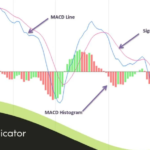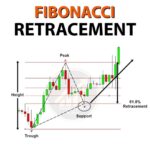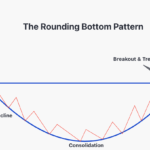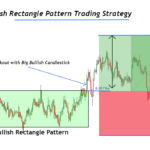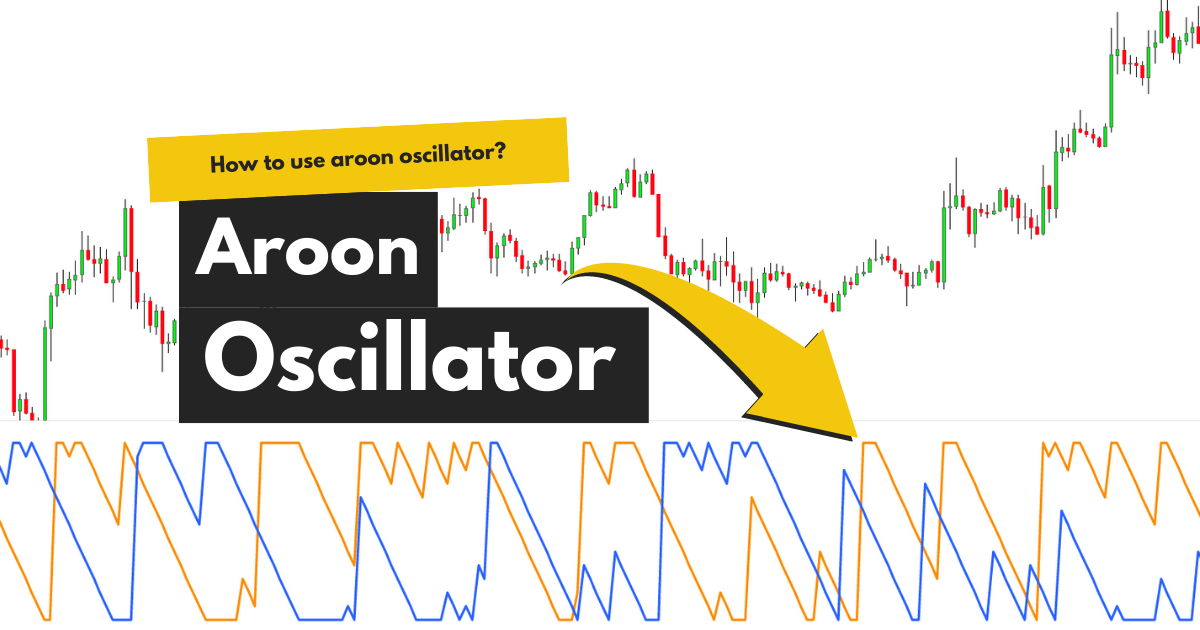
By ATGL
Updated August 27, 2024
The Aroon Oscillator is a valuable technical indicator that measures the strength and direction of a market trend. Developed in 1995 by Tushar Chande — a well-known quantitative analyst, trader, and author — the Aroon Oscillator is widely used by traders as a way to identify emerging trends and potential reversals. This article provides an in-depth look at the Aroon Oscillator, including its definition, formula, calculation methods, and practical applications in trading.
What Is the Aroon Oscillator?
The Aroon Oscillator quantifies the time it takes for a price to reach its highest and lowest points over a specified time period. By comparing the time between these peaks and troughs, the oscillator helps you gauge whether a market is in an uptrend, downtrend, or range-bound phase.
The word “Aroon” comes from the Sanskrit language, meaning “dawn” or “early light.” Chande chose this name to symbolize the indicator’s purpose of identifying the beginning of a new trend in the market. The Aroon Indicator, which includes the Aroon Up and Aroon Down lines, reveals the strength and direction of trends, helping you spot emerging trends early.
- Is Aroon a Good Indicator? The Aroon Oscillator is effective in identifying trends and potential reversals. However, like any technical tool, it is most reliable when used in conjunction with other indicators.
- What’s the Difference Between Aroon Indicator and Aroon Oscillator? The Aroon Indicator consists of two lines — Aroon Up and Aroon Down, which measure the strength of an uptrend and a downtrend, respectively. The Aroon Oscillator, on the other hand, is derived from the difference between these two lines and provides a single value that oscillates around a zero line.
Aroon Oscillator Formula and Calculation Examples
The Aroon Oscillator is calculated by subtracting the Aroon Down from the Aroon Up. The resulting value oscillates between -100 and +100. Here’s how to compute it:
Aroon Up Calculation
The Aroon Up measures the number of periods since the highest high within a specified time frame. The formula is:
Aroon Up = [(n-Periods since highest high)/n]x100
In this formula, n is the number of periods considered (e.g., 25 days).
Aroon Down Calculation
Similarly, the Aroon Down measures the periods since the lowest low within the same time frame:
Aroon Down = [(n-Periods since lowest low)/n]x100
Aroon Oscillator Calculation
Once Aroon Up and Aroon Down are calculated, the Aroon Oscillator is:
Aroon Oscillator = Aroon Up – Aroon Down
Example
Suppose a trader is analyzing a 25-day period. If the highest price occurred five days ago and the lowest price occurred 20 days ago, the calculations would be:
- Aroon Up = [(25-5)/25] x 100 = 80
- Aroon Down = [(25-20)/25] x 100 = 20
- Aroon Oscillator = 80 – 20 = 60
Interpretation of Aroon Oscillator Signals
Understanding the signals generated by the Aroon Oscillator is necessary for effective trading. The oscillator’s value provides insight into the strength of a trend and potential reversals.
- Identifying Strong Trends: When the Aroon Oscillator is above zero, it suggests that an uptrend is gaining strength. Conversely, a value below zero indicates a strengthening downtrend. The closer the oscillator is to the extremes (+100 or -100), the stronger the trend.
- Recognizing Trend Reversals: The Aroon Oscillator is also adept at signaling potential trend reversals. A cross above the zero line from negative territory suggests a shift from a downtrend to an uptrend, while a cross below zero indicates a possible reversal to a downtrend.
- What Does the Aroon Oscillator Indicate? The Aroon Oscillator indicates the dominance of bulls or bears in the market. Positive values reflect bullish control, while negative values suggest bearish dominance.
How To Use the Aroon Oscillator Indicator in Trading
Traders often use the Aroon Oscillator to confirm the strength of a trend before making trades. For instance, if the oscillator is positive and rising, it confirms that the market is in an uptrend and acts as a buy signal.
The Aroon Oscillator can also help you identify non-trending markets. When the oscillator hovers near the zero line, it suggests that neither bulls nor bears are in control, indicating a range-bound or sideways market.
Limitations of the Aroon Oscillator
The oscillator may produce false signals in choppy or sideways markets, leading to potential losses. It is less effective in markets with frequent price fluctuations without a clear trend.
Additionally, the effectiveness of the Aroon Oscillator can be diminished during periods of low volatility. In such cases, the indicator may not provide clear trade signals, making it crucial to use it alongside other technical indicators.
Combining Aroon Oscillator With Other Indicators
To enhance its accuracy, traders often combine the Aroon Oscillator with other technical indicators for day trading.
- Moving Averages: Using moving averages with the Aroon Oscillator can help smooth out price data and provide additional confirmation of trend direction.
- RSI and MACD: Combining the Aroon Oscillator with Relative Strength Index (RSI) and Moving Average Convergence Divergence (MACD) can offer a more comprehensive analysis of market conditions. For example, while the Aroon Oscillator may indicate a trend, the RSI can confirm whether the market is overbought or oversold.
- What Is the Difference Between RSI and Aroon Indicator? The RSI measures the speed and change of price movements, while the Aroon Indicator focuses on the time since the highest high and lowest low, making them complementary tools.
Become a Trading Master With Above the Green Line
At Above the Green Line, we provide the tools and insights you need to become a successful trader. By understanding and applying the Aroon Oscillator, along with other technical indicators, you can enhance your trading strategy and make informed decisions. Explore our membership options to access exclusive resources and support.


